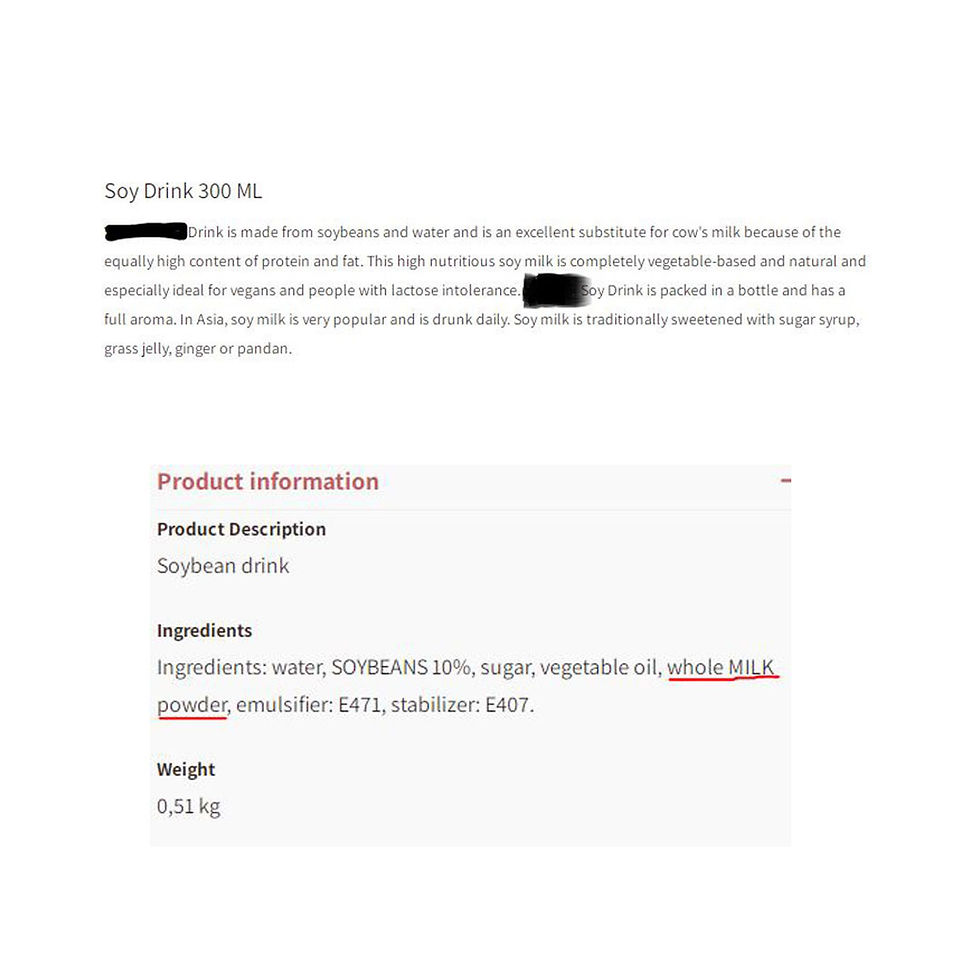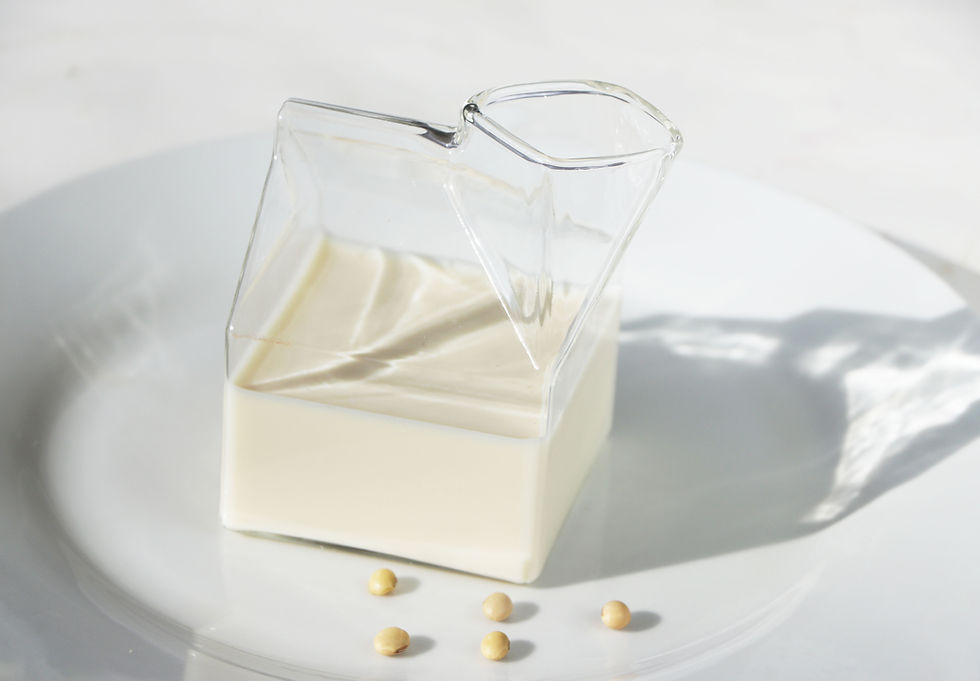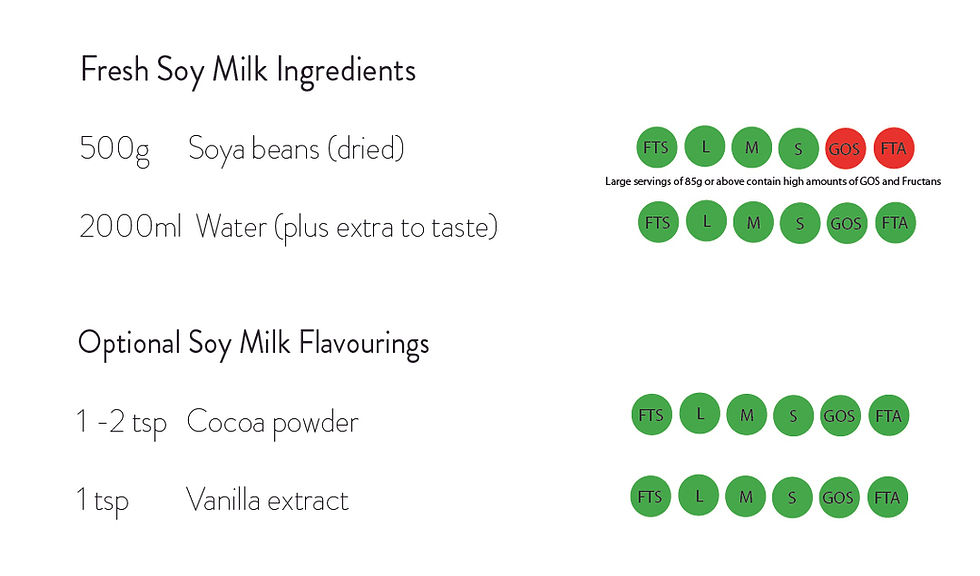Fresh Soy Milk
- Koka Health

- Mar 4, 2021
- 4 min read
Updated: May 17, 2024
If you have an allergy or intolerance to lactose, there are milk and yogurt alternatives derived from coconut, almond and soya beans that you could try. In addition to being lactose free, they also taste great!
Compared to just a few years ago, there is a much wider range of dairy free yogurts and milks available to purchase in supermarkets and even online.
The downsides to buying ready made dairy free milks and yogurts are that these products are usually expensive, pasturised and have a range of additives which are not always immediately obvious...... unless you really take time to read the small print on the labels.
Take this example of a popular brand of soy milk which describes itself as ideal for people with lactose intolerance...but in fact contains whole milk!!

Luckily, its super cheap and easy to make soy milk and yogurt from fresh!! I get about 4 pints of milk from 500g of dried soya beans. The great thing about making your own soy milk is that you know exactly what is in the finished product. Not only that, fresh soy milk also tastes sooooo much better than shop bought version of the same thing!
Soy milk is made from soya beans, which are soaked overnight in water, ground and then boiled to release the 'milk'. Finally the mixture is passed through a strainer and voila!!
Fresh soy milk!

I don't add sugar or flavouring to my soy milk..... but you could get creative and flavour this with cocoa powder, vanilla extract....anything really that suits you! What will you add to your soy milk?
If you decide to give this recipe a go, please share your thoughts, pictures and recipe tweaks. Good luck!
Notes before we get cooking!
FODMAP red, amber green rating reflects the total amount of Fructose (FTS), Lactose (L), Mannitol (M), Sorbitol (S), Galactooligosaccharide (GOS) and Oligos Fructans (FTA) in the TOTAL volume/weight of the ingredients used in the recipe.
If you are sensitive to GOS, then better to pass on this recipe. Tiger nut milk may be more suitable ...follow the link in bio for recipe and method.
This soy milk recipe makes approximately 4, 330ml bottles of soy milk (100 ml pictured).
I'm a big fan of simple recipes that don't need fancy equipment. For this recipe it does help to have a good grinder (blender), heavy bottomed, deep pan (the bigger the better) and a tightly woven piece of cloth for straining the nut pulp.
Ingredients:

Method
Step 1.
Wash the soya beans then cover with 3 times their depth of filtered water. Leave to soak overnight (24 hours). Very important to use a very clean pan and filtered water to ensure no unwanted strains of bacteria grow.
Step 2.
The soya beans should have absorbed half of the water and be nice and plump. Drain the water and transfer half of the beans to a blender.
Step 3.
Add 3 cups of water and blend on full speed for at least 3-5 minutes. The beans and water will turn into a thick, creamy but smooth white mixture. If the mixture is lumpy, keep blending. The more smooth the mixture, the higher the milk yield. Set aside.
Step 4.
Repeat steps 2-3 with the remaining beans.
Step 5.
Add 2 cups of filtered water to your deep pan and bring to a simmer.
Step 6.
Add the blended beans and bring to a boil. Be careful as the mixture grows in volume very fast and can spill over as soon as it reaches boiling point.
Step 7.
Turn the heat down as soon as the mixture begins to boil to a quick simmer, for at least ten minutes. This is to ensure that the bean mixture cooks well. It also ensures that milk develops its pleasant, nutty taste.
Step 8.
Let the mixture cool a little (not too much or the milk yield will be less), then pour into your chosen material/nut bag. Squeeze or hang to separate the milk from the pulp.
Step 9.
Pour the fresh milk into your chosen containers. Make sure that they are clean to minimise the growth of unwanted strains of bacteria. Keep refrigerated.
Step 10.
Enjoy at your leisure!!! Soy milk is good for 3-4 days in the fridge
Disclaimer
I'm very passionate about the management of autoimmune conditions in a healthy way.
I speak with medical professionals, read journals, try and test new recipes to share with you and diligently undertake research online. That being said, as you know, each autoimmune disease, as well as any set of symptoms you may be experiencing are unique.
All information provided is in no way intended to be a substitute for professional medical advice. Always talk to your doctor or healthcare provider to ensure the appropriateness of any information in relation to your own situation.
And finally, please comment and share so we as a community better cope with our conditions by through growth and learning.




Comments